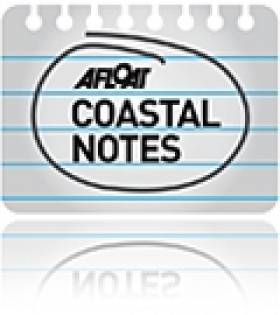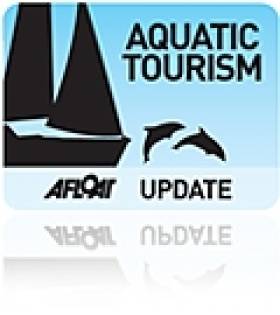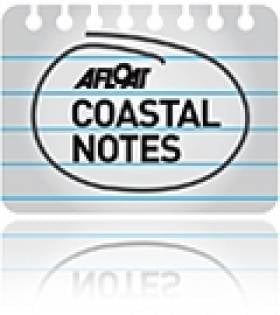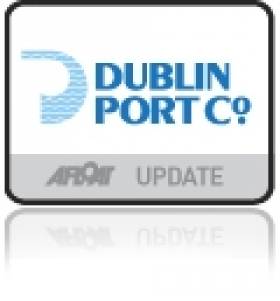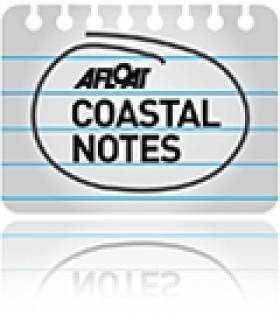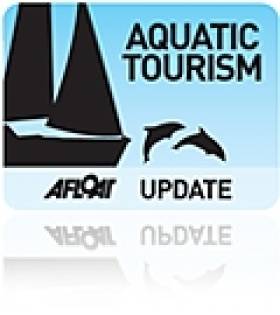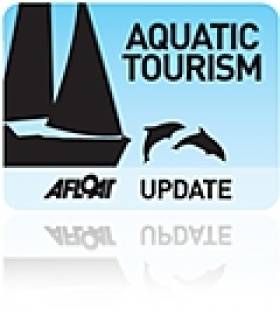Displaying items by tag: tourism
Achill Islanders Not So 'Keem' On Viewing Platform Plans
#IslandNews - A glass-floored viewing platform jutting out over the Atlantic Ocean on Achill Island has got officials excited about its potential to attract tourism.
But locals are concerned that the project could mar the area's special views with an eyesore.
As the Mayo News reported last month, funding has been secured to develop the so-called 'Signature Discovery Point' at Keem Beach on Ireland's largest coastal island.
Keem Beach is one of 35 locations along the Wild Atlantic Way in Co Mayo that will share in the €257 million funding pot.
And the ambitious plans for the area – that also features as part of the new Galway-Mayo Blueway – include a viewing platform over the waves and rocky shore near the old coastguard station, along the lines of the Grand Canyon Skywalk.
But the reaction among the Achill community has been mixed, with support for the initiative by development company Comhlacht Forbartha Áitiúil Acla tempered by comments from local sculptor Ronan Halpin, who expressed concerns over the "visual intrusion" and "sustainability" of such a unique engineering project.
“Keem Bay is one the most beautiful and unspoilt places in our country. Its isolation and seclusion are a major part of its inherent charm," he added. "The proposal to build a glass walkway at the top of Moiteóg would seem to fly in the face of all this natural beauty and majesty."
The Mayo News has much more on the story HERE.
Coastal, Lake Spots Among Ireland's 'Most Picturesque Destinations'
#CoastalNotes - Coastal spots and waterways feature heavily in HeraldScotland's list of the most picturesque destinations to visit in Ireland.
Some of these will be well known to locals and tourists alike, such as the wonders of Antrim's coast and glens (not least the Giant's Causeway and the Carrick-a-Rede rope bridge), the majestic Ring of Kerry and the breathtaking Cliffs of Moher.
But some perhaps lesser-known spots getting their due here include the Cavan lake country – with one to explore by kayak for every day of the year – and the Cooley Peninsula in Co Louth.
HeraldScotland has much more on the story HERE.
British Marine Federation Launch Scotland's Marine Tourism Strategy
#aquatictourism – The British Marine Federation is launching a Marine Tourism Strategy in March at the Scottish Tourism Week National Conference. Over 500 decision makers and key players in the tourism industry will be attending the event.
By 2020, the BMF say they want Scotland to be: "A marine tourism destination of first choice for high quality, value for money and memorable customer experience delivered by skilled and passionate people."
The Marine Tourism Strategy is an initiative led by a working group of industry leaders and user groups together with public agencies and enterprise bodies to focus on the sustainable growth of Scotland's marine leisure sector. 'With your help we can build the economic benefits of marine tourism for Scotland as a whole, and for all of our individual businesses, teams, employees and families' says BMF.
Scotland's marine environment is one of its crown jewels and encompasses some of the world's most beautiful and varied boating waters. Whether visitors seek adventure, wildlife, family boating experiences, day or extended visits, coastal, offshore or inland waters, Scotland's marine offer is complete, varied and of the highest standard.
Inchydoney Tops 'Best Beach' List For Second Year Running
#Beaches - And the title of Ireland's best beach goes to... Inchydoney in West Cork, as TheJournal.ie reports.
This marks the second year in a row that the Clonakilty strand took the top spot in TripAdvisor's annual ranking of Ireland's beaches, as chosen by visitors and tourists giving their ratings on the site.
It couldn't come at a better time for Inchydoney, as next month signals the start of the best period of the year to make the most of its peaceful atmosphere.
Elsewhere on the top ten list, Kerry places the most with four beaches making the grade - including Derrynane and Inch at numbers two and three respectively.
But the east coast also gets a look-in, with Curracloe in Wexford placing sixth, and Portmarnock in North Co Dublin rounding out the list at number 10.
TheJournal.ie has much more on the story HERE.
Dublin Port's Diving Bell To Be Restored As Visitor Centre
#DublinPort - Dublin Port's 140-year-old diving bell is set to be restored as a tourist attraction, as the Irish Independent reports.
The diving bell was first used in construction of the capital's deep-water quays in 1871, allowing for water to be pumped out and air to be pumped in for workers to make the river bed level, acting like a mobile caisson.
It was last used in the building of quayside walls as recently as 1958, and following a campaign to save it from the scrapheap in the 1980s it was moved to its present location on Sir John Rogerson's Quay.
Now it will form the basis of a new interpretive centre to be readied this June, where visitors will be able to access the 90-tonne device from beneath and learn more about its fascinating history.
The Irish Independent has more on the story HERE.
More from Dublin Port Company:
Have you ever passed by the odd looking, bell-shaped, red metal structure standing tall on Sir John Rogerson's Quay and wondered what it is? You could be forgiven for thinking it is a modern art sculpture or misplaced mound of metal. It is in fact an ingenious feat of Irish engineering that was essential in building Dublin's quay walls for 87 years. This is Dublin Port's "Diving Bell".
Dublin Port Company today announced a new project that will shed light on this important artefact and will transform the Diving Bell into a new interpretive exhibition that explains its origin and history.
The Diving Bell was designed by the port engineer Bindon Blood Stoney (1828 to 1907) and built by Grendon and Co., Drogheda. It was delivered to the Port in 1866, entered service in 1871 and was used in the building of the Port's quay walls until 1958. Stoney was a prodigious engineer and among his achievements were the building of the Boyne Viaduct in Drogheda, the construction of O'Connell Bridge and the building of many of the Port's quay walls including Sir John Rogerson's Quay and North Wall Quay Extension.
The Diving Bell was used in the building of the Port's quay walls from the Victorian era right up until almost the 1960s. It was a ground-breaking piece of engineering innovation in its day.
Its lower section was hollow and bottomless, providing just enough room for six men to work at a time. Once lowered into position on the riverbed, the crew entered through an access funnel from the surface and compressed air was fed in from an adjacent barge. The men inside the bell worked on the river bed exposed at their feet, excavating the site where a massive concrete block would later go; all the excavated soil was stashed in trays hanging inside the bell, and brought up when the bell was lifted.
The project, which commences this week and opens in mid-June 2015, will elevate the 13m tall, 90 tonne Diving Bell onto a two metre steel structure, creating a ramped public access route underneath. A water feature will also be installed beneath the structure accompanied by a series of interpretative panels explaining the historical, social and engineering significance of the Diving Bell. The new exhibition will be illuminated at night time using energy efficient LED lighting.
The project has been designed with the expertise of a range of people including the architect Sean O'Laoire, the sculptor Vivienne Roche, Tom Cosgrave (professor of engineering at the University of Limerick) and Mary Mulvihill of Ingenious Ireland.
This is the first project in Dublin Port's plan to create a 'distributed museum' of attractions across the Dublin docklands and into Dublin Port to preserve the port's industrial heritage and history.
Weslin Construction Ltd. has been appointed to carry out the project, which will be completed by mid-June 2015, when the newly reconfigured Diving Bell will open again to the city.
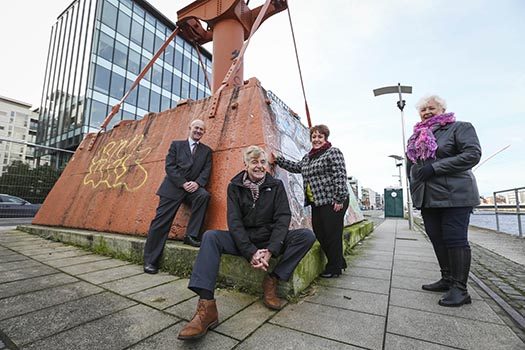
Pictured at the announcement are: Eamonn O'Reilly, Chief Executive, Dublin Port Company, Sean O'Laoire, Director of MOLA Architecture, Dolores Wilson, St. Andrews Resource Centre and Betty Ashe, St. Andrews Resource Centre
Eamonn O'Reilly, Chief Executive, Dublin Port Company said: "The Diving Bell is a remarkable feat of Irish engineering and Dublin Port Company is proud to invest in its transformation and bring the history of this magnificent structure to life along the Liffey. True to the commitment in our Masterplan, we are working to better integrate Dublin Port and the city. Developing the Diving Bell is the first step in our plan to create a distributed museum of port and industrial heritage attractions across the Dublin docklands and into the port. We are confident that the Diving Bell will give Dubliners and visitors to the city a true sense of Dublin as a port city with a wealth of industrial heritage to discover."
Betty Ashe of St. Andrew's Resource Centre, Pearse Street, said: "I am delighted that the next phase of the Diving Bell Project is now underway, having been involved in a Millennium project with St. Andrew's Resource Centre, the DDDA and Dublin Port Company to save and restore this fascinating artefact from the Victorian era. As a port community, we have a duty to preserve local history for future generations. I thank Dublin Port Company for sharing that vision and giving the Diving Bell a prominent place in the history books for this community and our city."
Shipwrecks, Murder, Jedi Knights: Ireland's Islands Have Stories To Go With The Views
#Coastal - Ireland's coastal islands offer some astounding vistas, as this breathtaking video from the Smithsonian Channel shows perfectly.
The clip from the American TV channel's Sky View series sweeps high above the Aran Islands to highlight the rugged beauty of the west coast, from the skeletal shipwrecks to the rocky shores to the veins of stone walls across the green landscape.
It's easy to see why the Wild Atlantic Way is such a draw for tourists, but let's not ignore the bounty of the east coast either, as the Irish Independent highlights the New York Times' celebration of Dublin Bay's world-class views for "little more than the cost of a pint".
Cited as "one of the most beautiful views in the world" in that tribute is the vista as seen from Howth Head, from where one has a perfect 'eye-catching' view of the enthralling Ireland's Eye.
The tiny island, with its prominent Martello tower, is less than a mile from the North Dublin fishing village, and doesn't even seem that far from the end of the pier.
But as Conor Pope reports in The Irish Times, it "may as well be on a different planet", describing a place full of mystery, history – and even murder.
Meanwhile, off the southwest coast there's another tiny rock with its own storied past that's about to take on a whole new relevance to fans of the Star Wars saga.
BBC News reports on Skellig Michael, the island "that links Irish monks and Jedi knights" after filming took place last year for the hotly anticipated movie The Force Unleashed.
The island is already a popular spot for visitors, but could soon welcome many more – with lightsabers in tow!
Water-Based Pursuits Make For Great Adventure Getaways
#Tourism - Activities on the water feature heavily in The Irish Times' new guide to adventure holidays around the country.
Kitesurfing and kayaking on the coast are go-to pursuits at all times of year, but some activities that may be less familiar include coasteering – a combination of rock climbing and scrambling across the more rugged parts of the coastline.
Thrills can also be had by the less athletically inclined by float tubing – essentially swimming with a giant inflatable ring – and 'ride and tide', a mix of horse riding on sand and through surf and kayaking to an offshore island.
But for those of a calmer disposition, there's free diving, which employs yoga and breathing techniques to relax the body while under water, and the sedate charms of canoeing on the Barrow.
The Irish Times has more on the story HERE.
Wild Atlantic Way Is Magazine's Choice For 'Best Tourist Attraction'
#WildAtlanticWay - The Wild Atlantic Way was recognised as ‘Best Tourist Attraction’ at the third InBusiness Editors' Choice Awards at a ceremony in Dublin's Hibernian Club.
Fáilte Ireland says it invested €10 million during 2014 in what's Ireland’s first long-distance touring route, stretching from the Inishowen Peninsula in Donegal to Kinsale in Co Cork.
And the news comes in the same week as the Loop Head Peninsula, a key attraction on the route, was named as one of the world's top 100 sustainable travel destinations.
"The enthusiasm out there for this project is impressive and not only amongst tourism businesses but also in the wider community," said Fiona Monaghan, head of the Wild Atlantic Way project for Fáilte Ireland. "The key to success for this initiative is its authenticity – not just the places but also the people of the Wild Atlantic Way.
“With its capacity to drive extra visitor footfall, mobilise communities and showcase the best of the West Coast of Ireland, the Wild Atlantic Way is set to be one of the most significant developments in modern Irish tourism and to be a significant engine of regeneration for rural Ireland," she added.
"I have no doubt that there is at least a decade of growth in the Wild Atlantic Way and is already luring visitors to Ireland as they seek to explore the longest defined coastal route in the world.”
Irish companies and individuals were recognised at the InBusiness Editor’s Choice Awards, which honour outstanding achievement in the Irish business community. Winners were selected based on the broad criteria of growth, profile of business, range of services and customer care.
Loop Head Named As Top Sustainable Tourism Destination
#Tourism - Loop Head Peninsula has been named as one of the world's top 100 sustainable travel destinations, as The Irish Times reports.
The breathtaking Clare coastal spot is featured with the likes of the UK's Lake District and New Forest, Easter Island in the Pacific and the Wild Coast in South Africa's Eastern Cape in the first Sustainable Destinations Global Top 100 travel guide.
The Irish Times has more on the story HERE.
Dublin Docklands Could Be 'Luxury Yachting Destination'
#Docklands - More than 1,200 jobs could be created by making Dublin's Docklands a destination for luxury maritime tourism, as The Irish Times reports.
That's the message from Docklands Business Forum chair Ciaran Flanagan, who claims that developing Grand Canal Basin and the bank of the Liffey opposite as a "world class luxury yachting destination" could bring "about €36 million into the local economy".
The story appears only weeks after Afloat's WMN Nixon asked the question in his weekly blog on Afloat.ie: Who Runs Dublin Bay, The Capital's Waterborne Playground?
Flanagan's comments come ahead of the Docklands Business Awards this Thursday 27 November, which he says "are a key platform to highlight the activity and invocation taking place in the Docklands area but also an important forum to underline the potential the area still holds."
Meanwhile, nearby Dun Laoghaire marina on the south shore of Dublin Bay has tweeted an image of its recent superyacht style visitors. In 2014 it has had a series of high profile visiting superyachts including Superyacht Christoper in June and Arcadia in September.
The Irish Times has more on the story HERE.



























